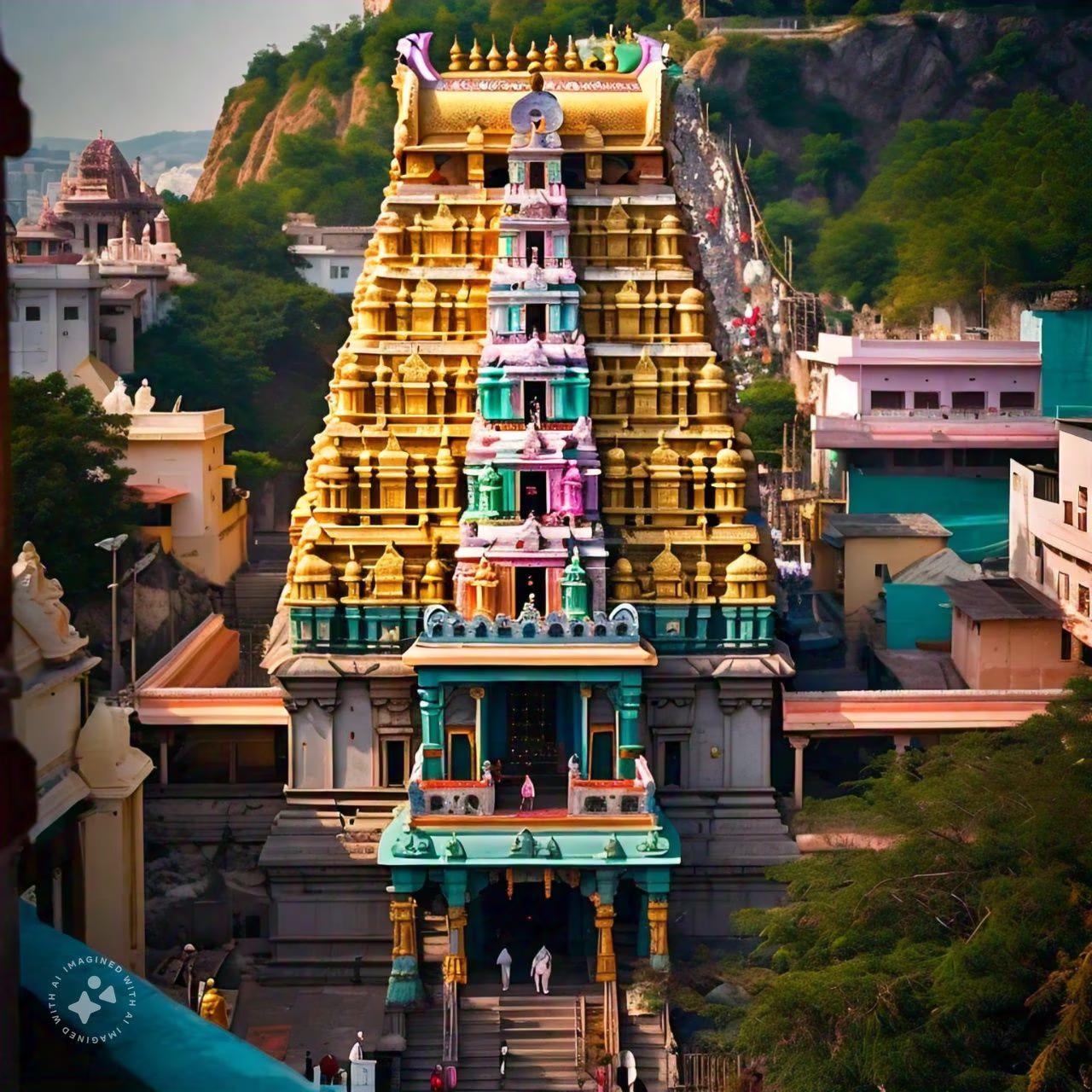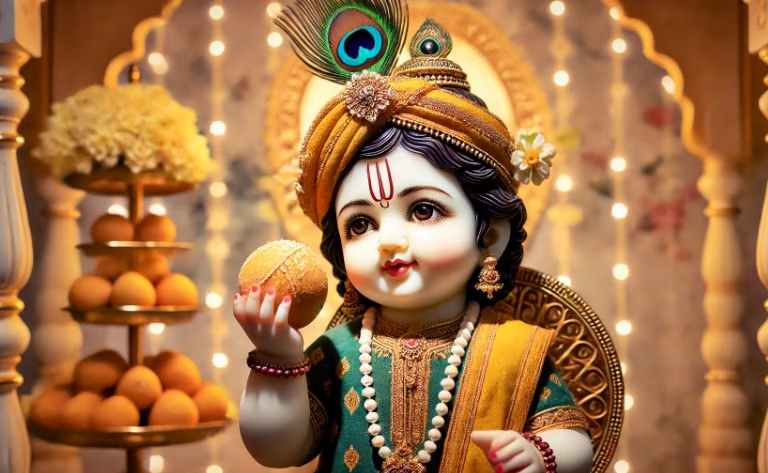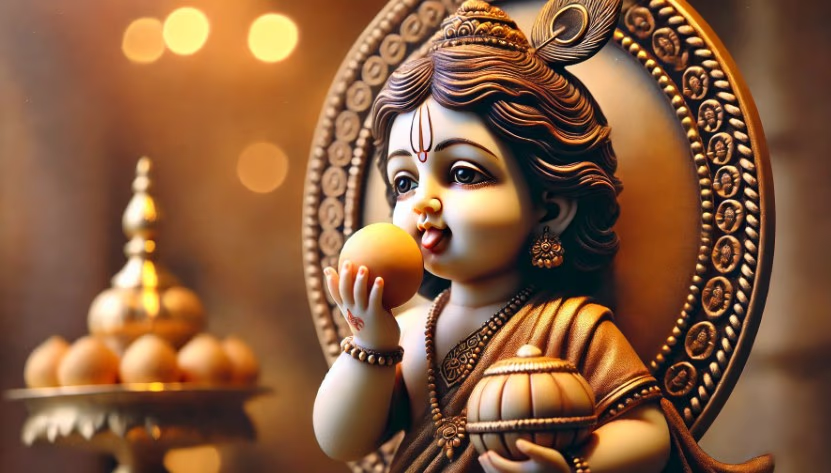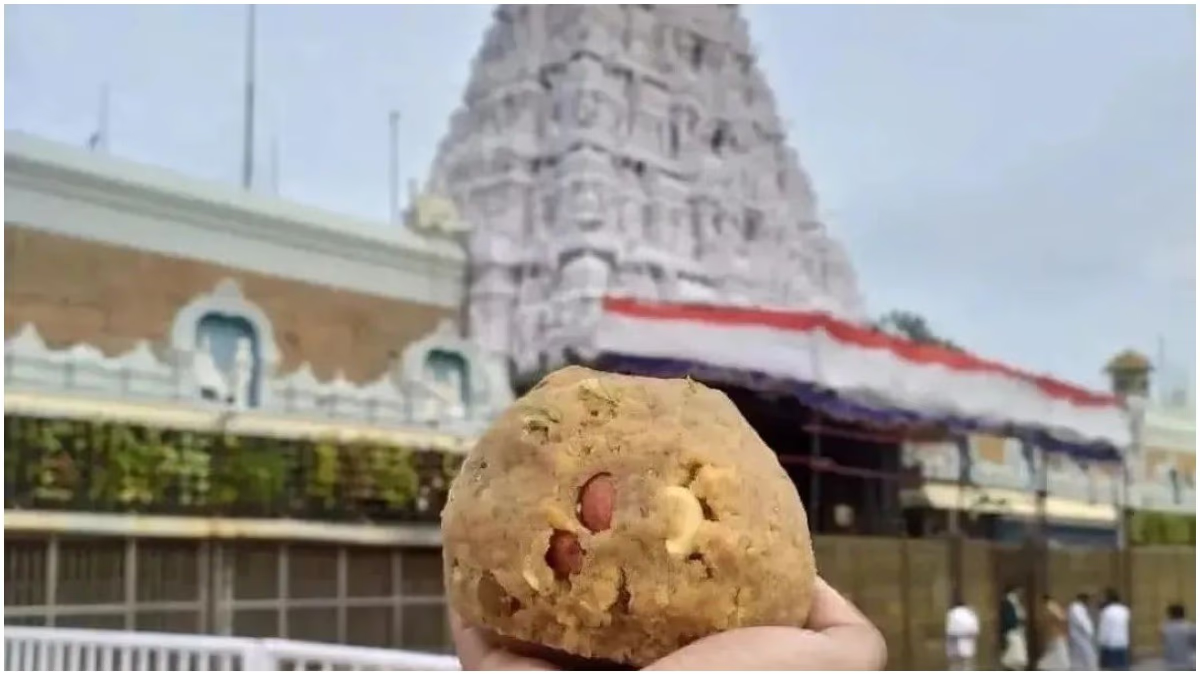Located in the southern state of Andhra Pradesh is the nation's wealthiest temple, Tirupati Balaji, sitting atop the Tirumala hills. The deity enshrined in the sanctuary is known as Lord Venkatesh, Venkateswara, Tirupati Swami, and Tirupati Balaji. Three things have been notably famous about this temple. Firstly, it's one of the richest temples in India. Secondly, the number of devotees visiting here annually is in the millions, and so is the donation amount. The third and most crucial famous aspect is the temple's Prasadam - the Laddu. It symbolizes spirituality, has an incredible taste, and is a tangible representation of Lord Tirupati's blessings.
The fame of Tirupati's Prasadam is noteworthy. Recently, there's been an uproar over allegations of adulteration in these renowned laddus. Specifically, it is claimed that beef fat, fish oil, and animal tallow were mixed into the laddus. This revelation has upset the devotees who are now demanding action against those responsible for the adulteration of the sacred laddus.
What is the belief?
While the investigation into this issue will proceed, the question arises as to why the Laddu Prasadam of Tirupati holds such significance. Where did it originate, and how did it begin? The history of Tirupati's famous Laddu Prasadam is rich and ancient. The Laddu Prasad is intertwined with the traditional rituals and devotion of the Tirumala Venkateswara Temple. It is offered to Lord Balaji as a special prasadam in the temple and is accepted by devotees with profound reverence and trust. In all temples of Lord Vishnu, panchmeva prasadam holds substantial importance. These symbolize the five elements, five senses, and five elements of nature. Combined, they are used to prepare prasadam. Thus, laddus made from gram flour, ghee, sugar, cashew nuts, and raisins started being offered as prasadam. The popularity and religious significance of these laddus have made them an integral part of the identity of the Tirupati Temple.

Source: aajtak
What is the history of Laddu Prasadam?
It is believed that the tradition of the Laddu Prasadam in Tirupati started in the 18th century. However, there is no specific documentation on when laddus were first adopted as a special prasadam. The deep-rooted faith of people and its distribution as prasadam is centuries old. Remarkably, it has been a part of the religious ceremonies in the temple courtyard for hundreds of years and has been distributed massively to devotees after the daily worship. The process and ingredients used to make the laddus have remained unchanged for centuries, maintaining their unique taste and recognition among people. Over the decades, this laddu has carved a distinct niche for itself among people as Tirupati’s special naivedyam.
In 2009, Tirupati's Laddu was awarded the Geographical Indication (GI) tag. This means that Tirupati Laddu has a specific identity and can only be prepared in the Tirumala Venkateswara Temple. This tag ensures that the uniqueness and quality of Tirupati Laddu are preserved.
These laddus are made with special ingredients like gram flour (chickpea flour), sugar, ghee, cashew nuts, raisins, cardamom, and other dry fruits. They are prepared specifically in the temple kitchen, known as "potu," following traditional methods. Every day, a large number of laddus are made. They are large in size, aromatic, and have a distinct taste.
Discussing the relevance and importance of laddus, in Indian society, laddus symbolize auspiciousness and purity. They are made by combining small pieces or roasted flour with ghee, hence symbolizing unity and organization. Additionally, Tirupati’s laddus are considered highly auspicious and sacred. It is believed that consuming this prasadam brings the blessings of Lord Venkateshwara, signifying his grace. The Tirupati Laddu is not only a delicious prasadam but also carries religious and cultural significance. The belief is that receiving this prasadam as Lord Balaji's blessing fulfills all desires.

Source: aajtak
When young Krishna devoured the offering laddus
Tirupati Balaji Temple’s prasadam holds religious significance and is associated with several folklore, making it even more special. One story behind adopting laddus as prasadam is connected to Lord Krishna’s childhood in the Dwapar Yuga. It is said that once Baba Nand and Mother Yashoda were worshipping Lord Vishnu. Naughty Kanhaiya was playing nearby. Meanwhile, Baba Nand picked up a tray of laddus and invoked Lord Vishnu to partake in the offering. When they opened their eyes, Kanhaiya was seated on the offering platform, enjoying the laddus. Firstly, they smiled, seeing Kanhaiya and then realized that the offering laddus had been eaten by him. Mother Yashoda made laddus again. Baba Nand offered the bhog again, but this time too, Kanhaiya ate the laddus. This happened repeatedly. In anger, Baba Nand scolded, “Kanhaiya, wait a bit, let me offer the bhog first, then you can have the prasadam.” Then Kanhaiya, in his baby voice, said, “Baba, it is you who keeps calling me for the offering” and revealed his four-armed form to Baba Nand and Mother Yashoda, saying, “you have made very delicious laddus for me; from now, these laddus will be as dear to me as butter.” Since then, young Krishna is offered butter and sugar, and four-armed Lord Krishna is offered laddus as bhog.
In the Tirupati temple, the four-armed form of Sri Krishna is installed, which is an eternal form of Lord Vishnu. The term Tirupati means the lord of the three worlds. Here, he resides as Venkatesh Srinivasa with his consorts Padma and Bhargavi. Padma and Bhargavi are avatars of Goddess Lakshmi, and Srinivasa Venkatesh himself is Maha Vishnu. There are other tales explaining why laddus are accepted as bhog and prasadam in Tirupati Temple.

Source: aajtak
The dispute between Lord Balaji and Goddess Lakshmi
According to a popular folklore, once Lord Venkateshwar (Balaji) and Goddess Lakshmi had a disagreement over who is offered more bhog. Lord Venkatesh claimed that he receives the most offerings, while Goddess Lakshmi argued that a portion of his offerings belongs to her since she is the goddess of wealth, without whom any offering is incomplete.
To settle this dispute, they tested a devotee. First, they visited a wealthy devotee's house who prepared various dishes for the offering, but Lakshmi was not satisfied. Next, they went to a true devotee’s house. The devotee offered laddus made with leftover flour, fruits, and dry fruits. Lord Balaji was immediately satisfied with this. Thereafter, laddus were acknowledged as the beloved bhog of the deity.
Goddess Lakshmi herself prepared the prasadam laddus
Another legend states that during the period when Lord Venkateshwar’s idol was being installed in the Tirumala hills, the temple priests were contemplating what to offer him as prasadam. At that moment, an elderly mother came with a tray of laddus and insisted on offering the first naivedyam. When the priests offered it, they were astounded by its divine taste. Upon seeking the elderly woman’s whereabouts, they found her vanished. It is believed that Goddess Lakshmi herself assisted in indicating the prasadam. One legend also suggests that Lord Balaji personally taught the priests the method of making laddus. Since then, laddus are considered the special prasadam of Lord Venkateshwar, and the tradition of distributing them among devotees began.
When Srinivasa borrowed money from Kubera
A famous story is that when Lord Venkateshwar married Goddess Padmavati, he needed money for the wedding. For this, he took a loan from the deity of wealth, Kubera. It is believed that even today, Lord Venkateshwar is on Earth repaying that loan. Hence, Lord Tirupati Balaji accepts donations from devotees and fills his hundi (donation box). The Laddu Prasadam is linked to this debt, as it is considered a blessing from the Lord to his devotees who in return, donate according to their faith, helping the Lord repay the debt.




